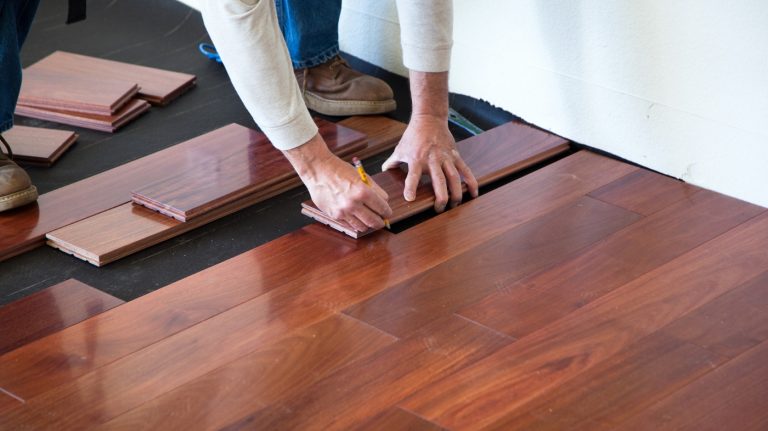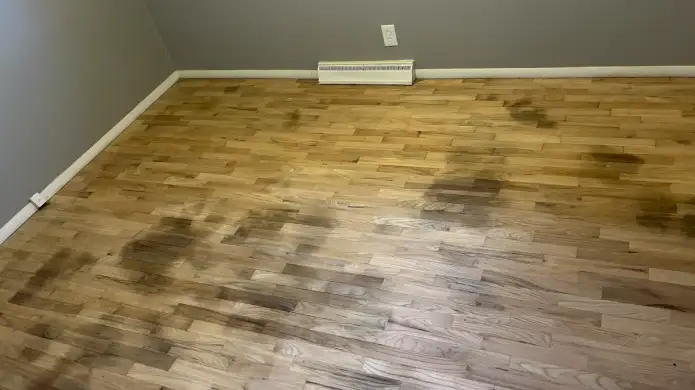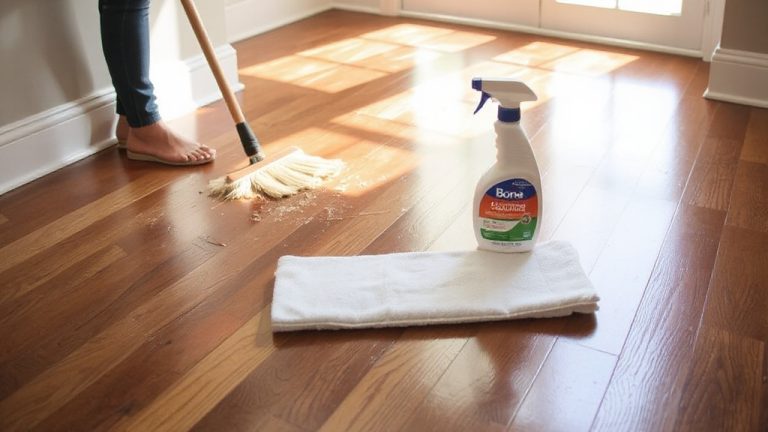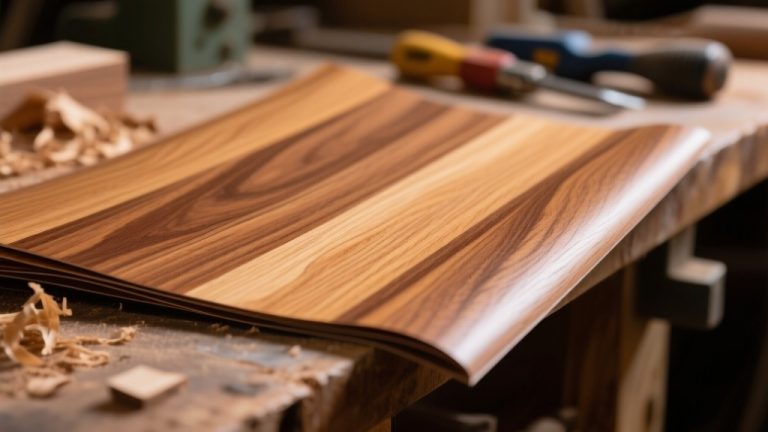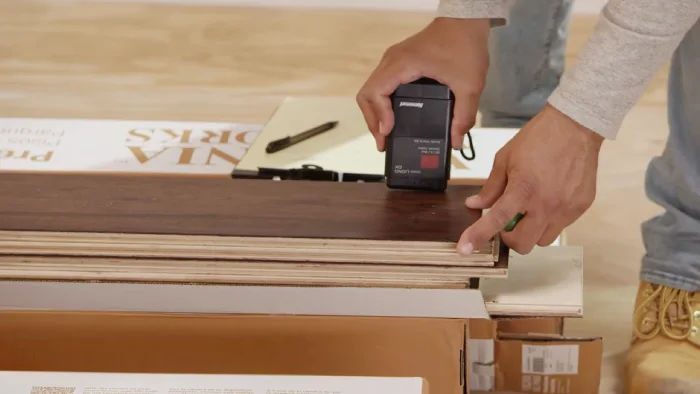How to Clean a Hardwood Floor After Removing Carpet: 9 Steps [DIY]
Hardwood floors are one of the most popular types of flooring due to their timeless beauty, durability, and longevity. However, if you’ve recently removed the carpet from your hardwood floor, you may be wondering how to properly clean it without damaging the surface of the wood.
Transform your hardwood floors to their original beauty and make them last for years by following some crucial steps: remove any leftover adhesive and tack strips, vacuum the area thoroughly, and use the right cleaning solutions and tools. Achieve the best results by taking the time to clean properly after carpet removal.
We’ll share with you how to effectively clean your hardwood floor after carpet removal so that you can enjoy a clean and beautiful finish.
How to Clean a Hardwood Floor After Removing Carpet: 9 Simple Steps

Revive your hardwood floors with ease. Discover the detailed steps to clean your space after tearing out the carpet. Don’t let stubborn residue damage your floors. Follow our guide for flawless results.
Step ONE: Gather Necessary Cleaning Supplies
Make sure you have all the supplies you need before you start.
To begin with, ensure that you have a sturdy broom or vacuum cleaner to remove any debris left behind by the carpet removal process. You may also need a dustpan and brush for spot-cleaning tight areas where debris has accumulated.
A mop and bucket are also crucial for deep-cleaning your hardwood floors.
Also, choose an appropriate cleaning solution for your particular type of hardwood flooring. If unsure about what product to use, consult with a professional before making any purchases.
Do not forget protective gear such as gloves and masks when working with chemicals during cleaning.
Step TWO: Prepare the Hardwood Floor For Cleaning
After gathering all the necessary cleaning supplies, the next step is to prepare the hardwood floor for cleaning.
Preparing a hardwood floor for cleaning after removing the carpet is to sweep and vacuum any debris, dirt, or dust. A broom with soft bristles should be used for sweeping, while a vacuum cleaner equipped with a hard floor attachment will effectively remove tiny particles.
If there are areas where debris has been stuck on the floor, try using a plastic scraper tool to gently lift it off without scratching the surface.
Step THREE: Remove Any Remaining Carpet Adhesive
To remove any leftover carpet adhesive, scrape off as much glue residue as possible using a putty knife or scraper. Be sure not to scrape too hard and damage the wood surface underneath.
Next, soak a clean cloth in warm water and place it on top of the remaining adhesive for about 10 minutes. Getting rid of the adhesive will be easier this way.
Once you have softened the remaining glue residue, use an adhesive remover specifically designed for hardwood floors. Apply some solution onto a microfiber cloth and rub gently over the affected area until all traces of glue are removed entirely.
Repeat this process if necessary, making sure never to let any liquid sit on your wooden floor for more than a few minutes at a time.
Step FOUR: Inspect the Floor For Damage
After vacuuming or sweeping the area, it is important to inspect the hardwood floor for any damage before cleaning. Imagine a car with scratches and dents; it would be unwise to wash it without first checking if there are damages that require repair.
Similarly, when transitioning from carpeted floors to hardwood ones, there may be hidden imperfections, such as gaps between planks, warped boards, or stains that need special attention.
Once thoroughly inspect the floor and noting any issues, you can begin cleaning using appropriate tools and techniques. For example, using a too-wet mop could cause water damage to your newly exposed hardwood flooring.
Step FIVE: Choose The Right Cleaning Solution
This section will discuss choosing the right cleaning solution for your newly uncovered hardwood floor.
When choosing a cleaning solution for your hardwood floor, it is essential to consider the type of finish on your wood. Some finishes require specific solutions that may damage others. Therefore, reading the manufacturer’s instructions or consulting an expert is crucial.
Also, avoid using abrasive cleaners, which can scratch and dull your hardwood floor over time. Instead, opt for mild detergents or specialized solutions designed explicitly for hardwood floors.
Step SIX: Mix The Cleaning Solution
Mixing the appropriate cleaning solution is essential to clean hardwood floors after carpet removal effectively. The right mixture of cleaning agents will help eliminate any dirt or grime that may have accumulated over time.
Here’s how to make an effective cleaning solution:
1. Gather all necessary ingredients and materials: Before mixing the cleaning solution, ensure you have everything required at hand. You will need a bucket, vinegar, water, dish soap, and a mop.
2. Measure out the ingredients: To make the cleaning solution, measure one gallon of warm water into your bucket. Add 1/4 cup white vinegar and two teaspoons of dish soap to the water. Mix these ingredients until they are thoroughly combined.
3. Test in small areas: Before applying the cleaner throughout your entire hardwood floor surface area, test it on a small section first to ensure there are no adverse reactions such as discoloration or damage.
Step SEVEN: Apply the Cleaning Solution To The Floor
Apply the cleaning solution evenly across the floor’s entire surface using a mop or microfiber cloth. When mopping, ensure you wring out excess moisture from the mop head to prevent water damage.
After applying the solution, allow it to sit on the floor for five to ten minutes to penetrate dirt and grime before wiping off any excess liquid with a dry cloth. Repeat this process until all sections of your hardwood floor have been cleaned thoroughly.
Step EIGHT: Dry the Floor With a Clean Cloth
One important step is drying the floor with a clean cloth. This helps to prevent any moisture from settling on the surface, which can lead to damage over time.
To properly dry the hardwood floor after removing the carpet, use a vacuum or broom to remove any loose dirt or debris.
Once all visible debris has been removed, dampen a clean cloth slightly and use it to wipe down the entire surface area of the floor. Next, use a separate dry cloth to dry the floor thoroughly. Pay close attention to areas more prone to collecting moisture, such as corners or near doorways.
Step NINE: Polish The Floor For Added Shine (Optional)
However, polishing the floor can add an extra shine, making it look as good as new. Polishing is not only for aesthetic purposes but also helps to protect the wood from scratches.
To polish your hardwood floor effectively, start by sweeping or vacuuming any loose dirt and debris from the surface. Next, use a microfiber mop to apply the polish evenly on the entire surface of the wood.
You should work in small sections to ensure that you do not miss any spots. Allow the polish to dry completely before walking on the floor.
There are different types of polishes available in hardware stores. It’s essential to choose one that suits your needs best.
Here are some factors you should consider when selecting a suitable polish:
- Type: Some polishes come in water-based formulas, while others oil-based ones.
- Finish: Choose between high gloss, semi-gloss, or matte finishes depending on your preference.
- Durability: Check how long the polish lasts before deciding which one to buy.
- Application method: Some polishes require special equipment like buffer machines, while others are easy to apply using a mop.
What is the purpose of cleaning your hardwood floor after removing the carpet?
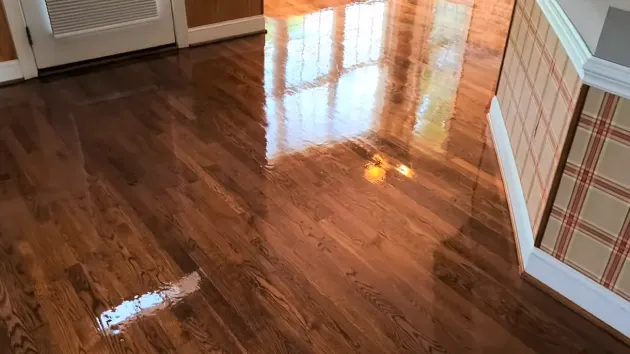
Cleaning your hardwood floor after removing the carpet ensures that all dust, debris, and adhesive residue is thoroughly removed from the surface. Failure to do so can have a detrimental impact on the appearance and longevity of the floor.
Dust and debris left on the floor can scratch and abrade the surface, causing permanent damage over time. If not fully removed, adhesive residue can cause discoloration and interfere with the adhesion of any future flooring or finishes.
Furthermore, cleaning your hardwood floors after carpet removal can improve indoor air quality by removing allergens or irritants trapped under the carpet. This is particularly important for individuals with allergies or respiratory issues, as the accumulation of dust and debris can aggravate symptoms.
Is it ok to wet mop hardwood floors after the carpet is removed?
It is not advisable to wet mop hardwood floors, particularly after carpet removal, as excessive water and moisture can cause damage to the wood. Instead, it is recommended to sweep and vacuum the floors thoroughly before using a cleaning solution specifically designed for wood floors.
This will help in effectively removing dirt and grime without causing any damage to the flooring. Additionally, following the manufacturer’s guidelines for cleaning hardwood floors ensures longevity and a pristine appearance.
Is it safe to clean hardwood floors yourself by removing the carpet?
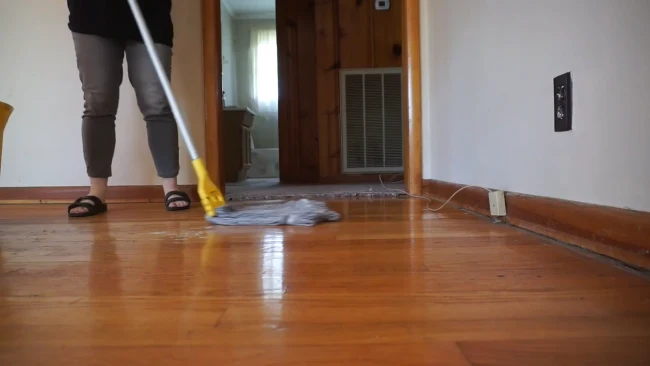
If you consider removing the carpet in your home to reveal the hardwood floors beneath, it is important to approach the task cautiously and carefully. While cleaning hardwood floors yourself by removing the carpet is possible, some important factors should be considered before diving in.
First and foremost, understand the condition of your hardwood floors. If they have been covered by carpet for a long period, there may be damage or wear that could be exacerbated by removing the carpet yourself.
Additionally, removing the carpet may involve pulling up tack strips and glue or other adhesives used to secure the carpet. This can leave residue on the hardwood floors that may require professional cleaning or refinishing to address fully. There is also potential damage during removal if proper precautions are not taken.
Achieve Clean Hardwood Floors After Removing Carpet
If you’re facing the task of cleaning a hardwood floor after removing the carpet, don’t worry – it’s not impossible. While it’s true that this process can be daunting, armed with the right knowledge, it can be done successfully.
Start by selecting the right tools and cleaning solutions for your particular floor; not all hardwood floors are created equal, and different materials will react differently to various substances. Next, learn the right techniques for removing any residue left behind by the carpet and cleaning and maintaining your floors.
Whether you take the DIY route or hire a professional, always proceed with caution and attention to detail. By following these tips, you can restore the natural beauty of your hardwood floors and enjoy them to the fullest for years to come.


